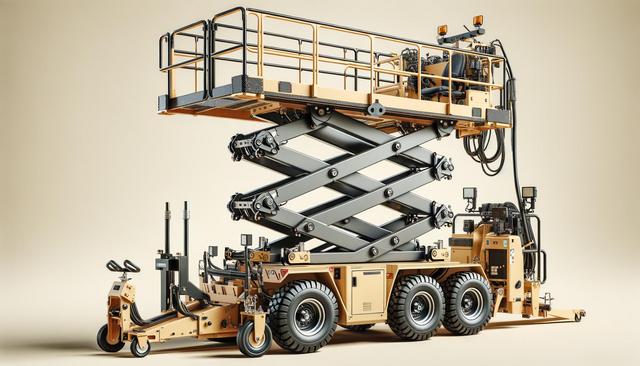
Towable Lifts Explained: A Practical Guide for Worksite Versatility
What Are Towable Lifts?
Towable lifts, also referred to as trailer-mounted boom lifts, are aerial work platforms equipped with a hydraulic arm that can be extended vertically and horizontally. These machines are designed for temporary access to inaccessible areas, especially at height. What sets them apart is their portability—they can be easily transported using a standard vehicle with a trailer hitch. This makes them especially useful for tasks that require equipment to be moved frequently between different locations. Towable lifts are commonly used in construction, maintenance, tree trimming, and by utility service providers.
There are several key advantages to using towable lifts. They are generally more affordable to rent or purchase than self-propelled or truck-mounted lifts. Additionally, their lightweight design reduces the risk of damage to delicate surfaces like lawns or tiled flooring. Most models can be set up quickly by a single operator, making them a practical option for small teams or individual contractors.
Main Features and Capabilities
Towable lifts come in a variety of configurations, but most share common features that enhance safety and functionality. The lift arm is typically articulated or telescopic, allowing for a wide range of motion. Many models offer 360-degree rotation and basket capacities that can support one or two workers along with tools or materials.
Some common features include:
- Hydraulic outriggers for stable positioning on uneven ground
- Battery or gas-powered operation for off-grid functionality
- Compact design for easy storage and transport
- Control panels both in the basket and at the base for flexible operation
These features make towable lifts suitable for both indoor and outdoor use. For example, electricians can use them for overhead wiring inside buildings, while landscapers can access tree canopies or roof edges outside. The combination of reach, mobility, and stability makes them versatile tools across industries.
Applications Across Different Industries
Towable lifts serve a wide range of industries due to their adaptability and ease of transport. In the construction sector, they are often used for painting, siding, and roof repair. Their ability to reach multiple stories without the need for scaffolding speeds up project timelines and reduces labor costs.
In facility maintenance, towable lifts are ideal for tasks like replacing lights, cleaning windows, or repairing HVAC systems in hard-to-reach spaces. Municipal services also benefit, using them for streetlight maintenance or hanging decorations during public events. Other industries that commonly use towable lifts include:
- Telecommunications – for installing and maintaining overhead lines
- Tree care – for trimming branches and removing deadwood
- Signage – for installing and repairing billboards or building signs
The ability to quickly hitch and move the lift makes it a time-efficient solution, especially in work environments that require mobility and responsiveness.
Safety Considerations and Operation
Operating a towable lift requires a clear understanding of safety protocols to prevent accidents. While these machines are designed with multiple safety features, human error can still lead to hazardous situations if not properly managed. Before use, operators should conduct a full inspection of the lift, checking for hydraulic leaks, tire pressure, and structural integrity.
Additional safety tips include:
- Always use the lift on level ground with outriggers fully deployed
- Never exceed the weight capacity of the platform
- Wear proper fall protection gear when operating at height
- Ensure the work area is clear of overhead obstacles like wires or branches
Training is also a crucial component of safe operation. Many jurisdictions require operators to be certified or trained in aerial lift operation. Manufacturers often provide guidelines and manuals that should be reviewed before use. Adhering to these practices not only ensures safety but also prolongs the life of the equipment.
Choosing the Right Towable Lift
Selecting the appropriate towable lift for a job depends on several factors, including height requirements, terrain, and the nature of the task. Models vary in terms of maximum lift height, horizontal reach, and platform size, so understanding the scope of your project is essential.
Consider the following when choosing a lift:
- Working height – the total height the platform can reach, including the operator’s height
- Horizontal reach – important for accessing hard-to-reach areas
- Weight capacity – determine if you need to lift one or two workers with tools
- Power source – choose between battery, gas, or hybrid models based on worksite conditions
Consulting with an equipment rental provider or manufacturer can help clarify which model suits your needs. They can offer insights into model-specific features and assist with delivery and setup if required. Understanding your project’s demands ensures you get the most value and efficiency from the equipment.
Conclusion: A Smart Choice for Flexible Access
For professionals who require reliable, mobile access to elevated workspaces, towable lifts present a practical and adaptable option. Their combination of reach, ease-of-use, and portability makes them particularly valuable for contractors, maintenance teams, and service providers who operate in varied environments. By understanding their features, applications, and safety requirements, users can maximize the lift’s potential while maintaining a secure work environment. Whether for routine facility upkeep or specialized outdoor tasks, towable lifts continue to be a well-regarded solution in the toolkit of modern worksite operations.